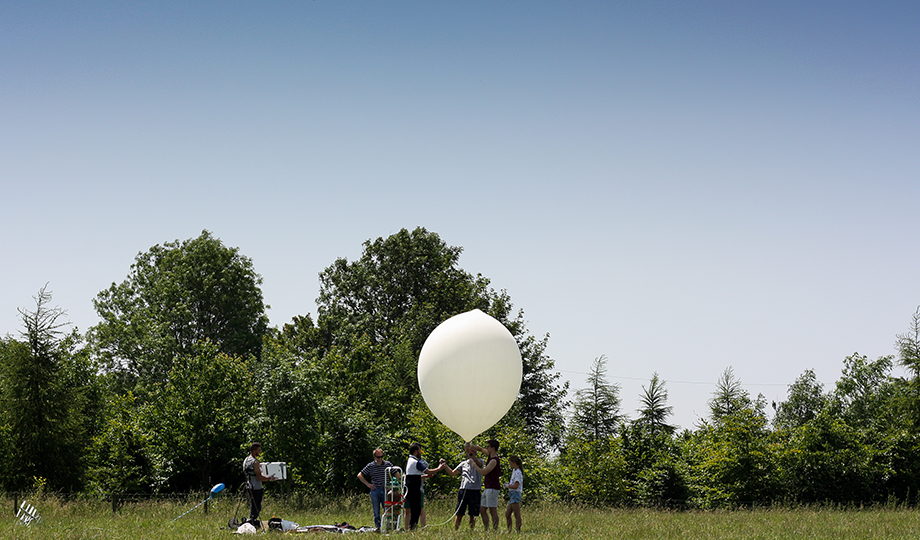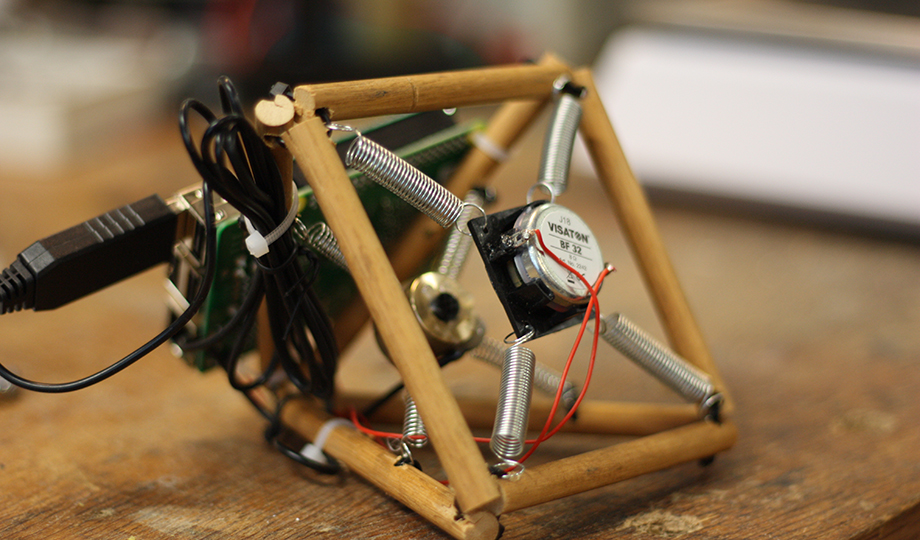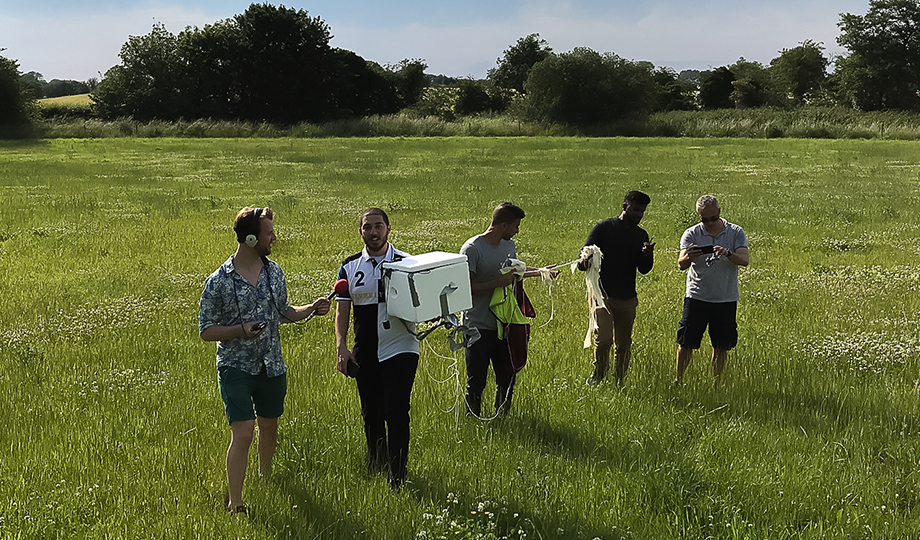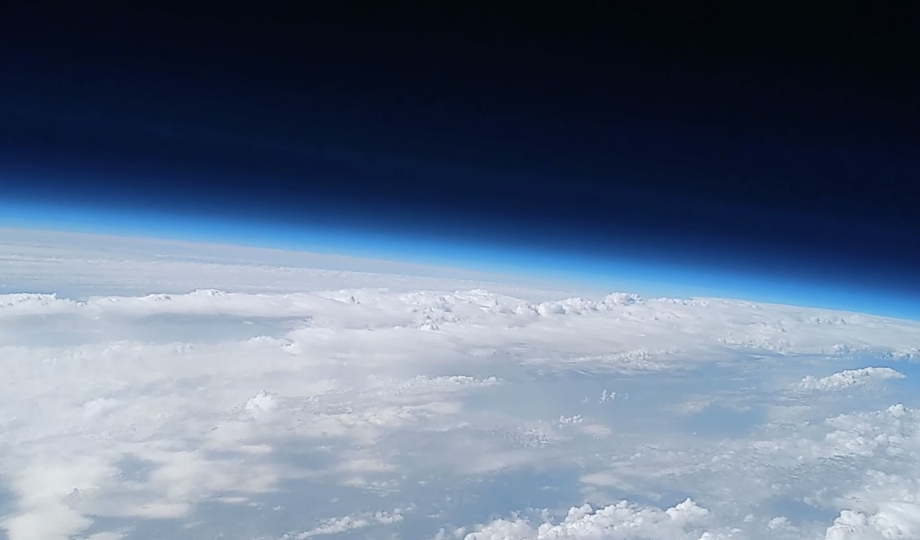A unique, low-cost, and crowd-scream-sourced experiment has proven what all sci-fi movie fans know is true: In space, no one can hear you scream.”
That line is the tag line from the famous 1979 movie Alien, of course. And now an innovative experiment in Britain has shown that the writer of that movie was correct. To prove it, they used off-the-shelf electronics, an inexpensive balloon, and the recorded screams from a mother in South Africa.

The person behind this experiment is University of Brunel graduate Omar Gad, an electrical engineer. He partnered up with “The Naked Scientists,” a BBC Radio show. Together they sent a balloon high into the atmosphere, where a speaker projected the voice of a South African mother named Noha. A short distance away from the speaker, and the mother’s screams telling her children to clean their rooms, was a microphone.
“Children! Come and clean your room!”
Noha, South African Mother and Space-Screamer
Gad’s experiment was initially designed to see how inexpensively he could send a small payload into space with a balloon. He wanted to use off-the-shelf parts to see how cheaply he could do it.
“I’ve always been an advocate of technology and trying to push hardware to its limits – like exposing it to a harsh environment like the weather in space,” said Mr Gad, who was celebrating his 23rd birthday on the day of the launch.
“The whole project only cost about £250.”
Omar Gad, Electrical Engineer Grad, University of Brunel
“Everything I had onboard is affordable and available to the public – almost the entire list of stuff that’s in the box I bought off Amazon! For example, the telemetry device [that enabled the team to track the balloon’s journey from the ground] has a range of over 500 kilometres and cost just £15. It’s quite cheap and affordable and just shows how far we’ve come with technology and innovation. You can buy these sensors and transmitters and send them to space to actually gather decent weather data. The whole project only cost about £250.”
Then he wanted to see if he could make the whole thing have an additional purpose. So Gad contacted Dr. Chris Smith, who is the host of the Cambridge University-based podcast and BBC radio show The Naked Scientists. He asked Smith if he’d like to include an audio experiment on the payload for his show.
“It’s not every day you go on the radio and say to people, ‘right, its your chance to send a scream to space.’”
Dr. Chris Smith, The Naked Scientists
“There’s this claim that no one can hear you scream in space, so I suggested to Omar that we could test the physics of how sound is transmitted through a gas, and actually work out whether or not the sound does disappear as the gas gets thinner with altitude,” says Dr Smith, whose shows are broadcast on BBC Cambridgeshire and BBC 5 Live in the UK, in South Africa, on the ABC across Australia, and worldwide as a popular podcast.
As part of the fun, the Naked Science podcaster reached out to the world for a sound to use in the experiment. They say that about a half million people heard their request, and they received a lot of submissions. They chose the screams of a person named Noha, a mother from South Africa. She submitted this scream: “Children! Come and clean your room.”

The idea behind the experiment was to monitor how well the microphone picked up the sound as the balloon rose and the atmosphere became thinner.
Most of us know how sound is transmitted. It can’t travel in a vacuum and it relies on air to transmit the sound. A sound source, like the speaker in this experiment, forces gas molecules to vibrate, and that vibration is picked up by a receiving device. Normally its ears, but its a microphone in this experiment. But what happens when there’s no air?
The device that contained the speaker and the microphone was contained in a lightweight styrofoam box. To make sure it wasn’t the box itself that transmitted the sound, the device had to be isolate from the box. Gad constructed a special lightweight structure to hold the speaker and the microphone and to isolate them from each other physically.

“The key thing here was that if we had just put a speaker in a box, then the vibrations could come out of the speaker and transmit through the box to the microphone – which is also stuck to the box – and which would just be a cheat, and wouldn’t have tested sound transmission through air,” said Dr Smith. “It would be like the sound equivalent of a short circuit.”
The experiment was going well, and once it reached an altitude of about 33 km (20.5 miles), the launch balloon burst. Experiment over.
At that altitude the air is much less dense. There’s only about 3/1000ths the air pressure at 33km as there is at sea level. According to the data, at that altitude the screams were barely audible.
Some of the payload’s electronics failed on the way down. It was outfitted with three tracking systems, but two failed during its parachute-slowed descent. Luckily, the third tracking system, Android’s Find My Phone app, was still functioning.
“It was descending quite rapidly and was hidden by the horizon,” said Dr Konstantinos Banitsas, Mr Gad’s former lecturer at Brunel who originally inspired him to launch the balloon. “And then when it landed the box fell over, so the satellite antenna was facing the ground.
“So, we lost two of the three means of finding it and were down to the last resort,” said Banitsas. “At first the Find My Phone thing gave us a very big circle, and if it’d stayed like that we wouldn’t have been able to find it. But as the minutes passed it started to read it more and more accurately – and then it pin-pointed it right here, in the middle of a field.”

The experiment gathered some other data, too. On-board sensors measured carbon dioxide and carbon monoxide as it ascended. It also measured ozone concentrations as it rose through the ozone layer.
But mostly, it was about the screaming. And according to the team it had stopped screaming by the time it reached the ground, unscathed.
“It’s not every day you go on the radio and say to people, ‘right, its your chance to send a scream to space,’” said Dr Smith, who first broadcast the results – now available on the Naked Scientists podcast at https://www.thenakedscientists.com – of the project on Tuesday evening.
According to Smith, this unusual experiment meant he had to pay an occupational price.
“Probably half a million people plus heard us appeal for a scream – so we had quite a lot of entries in. I think I’ve probably suffered irreparable hearing damage because of this.”

